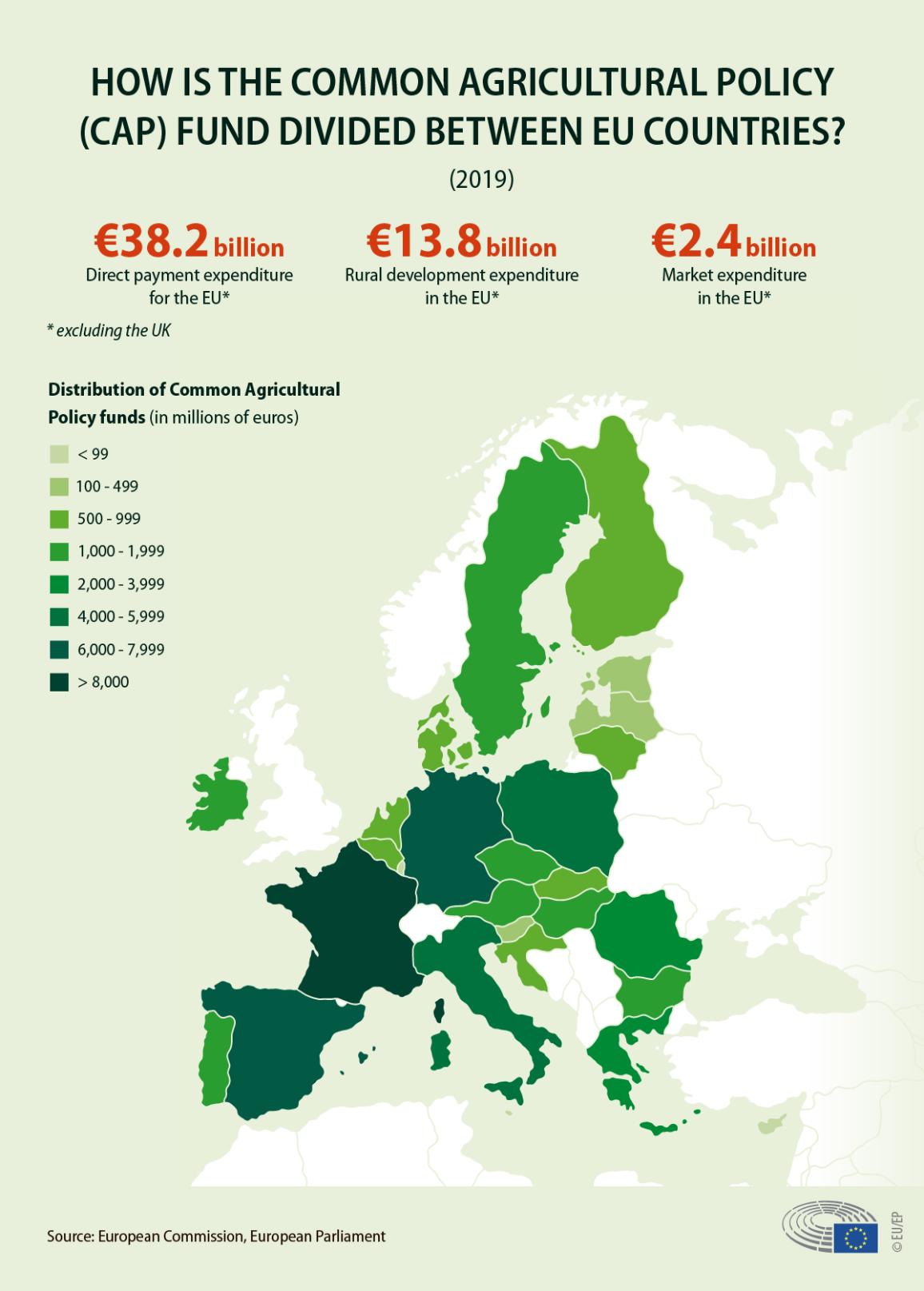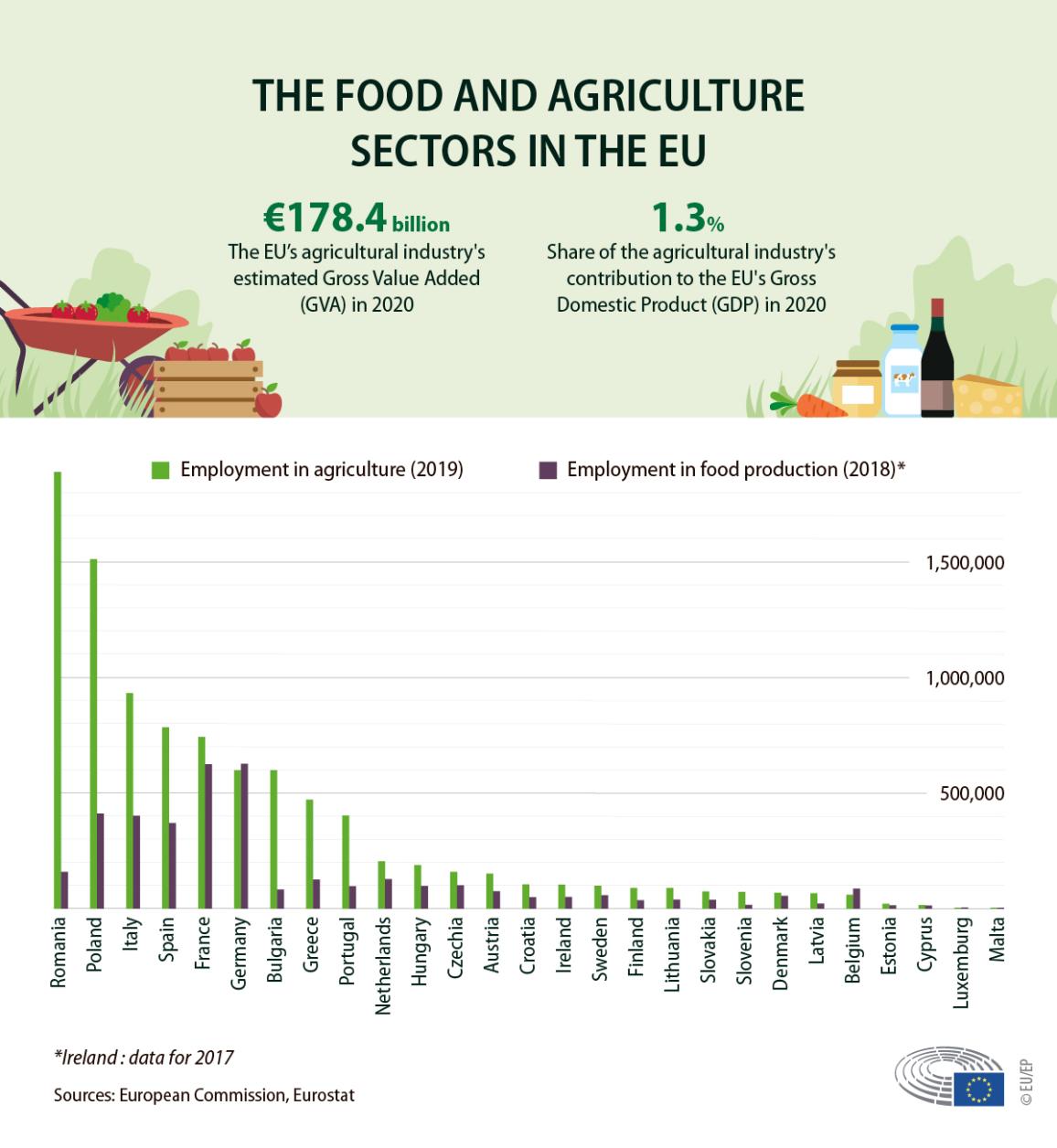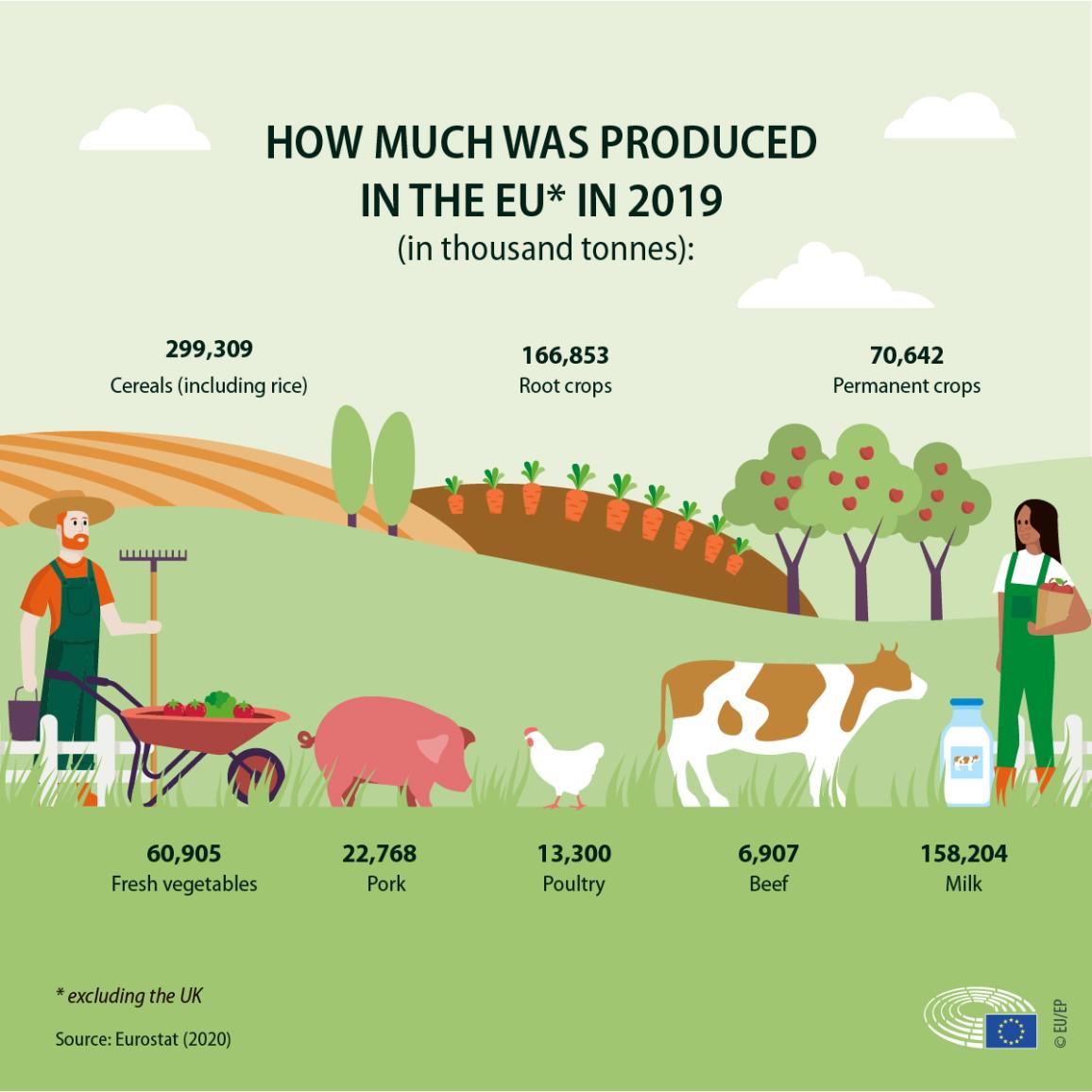EU agriculture statistics: subsidies, jobs, production (infographic)
Discover facts and figures about farming in the EU, including funding by country, employment and production.
Agriculture is an important industry for all EU countries and they all receive EU funds through the Common Agricultural Policy (CAP). These funds support farmers directly through the European Agricultural Guarantee Fund and rural areas, climate action and the management of natural resources through the European Agricultural Fund for Rural Development.
Find out how the Common Agricultural Policy supports farmers
EU agricultural subsidies by country
In 2019, €38.2 billion was spent on direct payments to farmers and €13.8 billion on rural development. A further €2.4 billion supported the market for agricultural products.
The rules governing how Common Agricultural Policy funds are spent is determined by the EU’s long-term budget. The current rules run until December 2022, after which the most recent reform of the Common Agricultural Policy will come into effect and run until 2027.
EU agriculture employment statistics
The agriculture industry supported 9,476,600 jobs in 2019 and 3,769,850 jobs in food production (in 2018) and accounted for 1.3% of the EU's gross domestic product in 2020.
Romania had the most people employed in agriculture in 2019, while Germany had the most people employed in food production in 2018.
For every euro spent, the farm sector creates an additional €0.76 for the EU economy. The gross value added from farming - the difference between the value of everything that the EU’s primary agricultural sector produced and the cost of the services and goods used in the production process - was €178.4 billion in 2020.
Agricultural production in Europe
EU agriculture produces a rich variety of food products, from cereals to milk. The EU has legislated to ensure that the food produced and sold in the EU is safe to eat. The EU’s farm to fork strategy, announced in 2020, aims to ensure that food is also produced more sustainably. MEPs want to cut pesticide use to better protect pollinators and biodiversity, end the use of cages in animal farming and increase land use for organic farming by 2030.
Common Agricultural Policy
-
(open in a new tab)
At a glance
Data sources
-
(open in a new tab)
Average Common Agricultural Policy income support per habitant in 2019
-
(open in a new tab)
Agriculture financing (spending per area and per country)
- Common Agricultural Policy in figures (table II: basic figures relating to agriculture and the food industry (EU-28, 2016-2019)
-
(open in a new tab)
Food production in the EU


